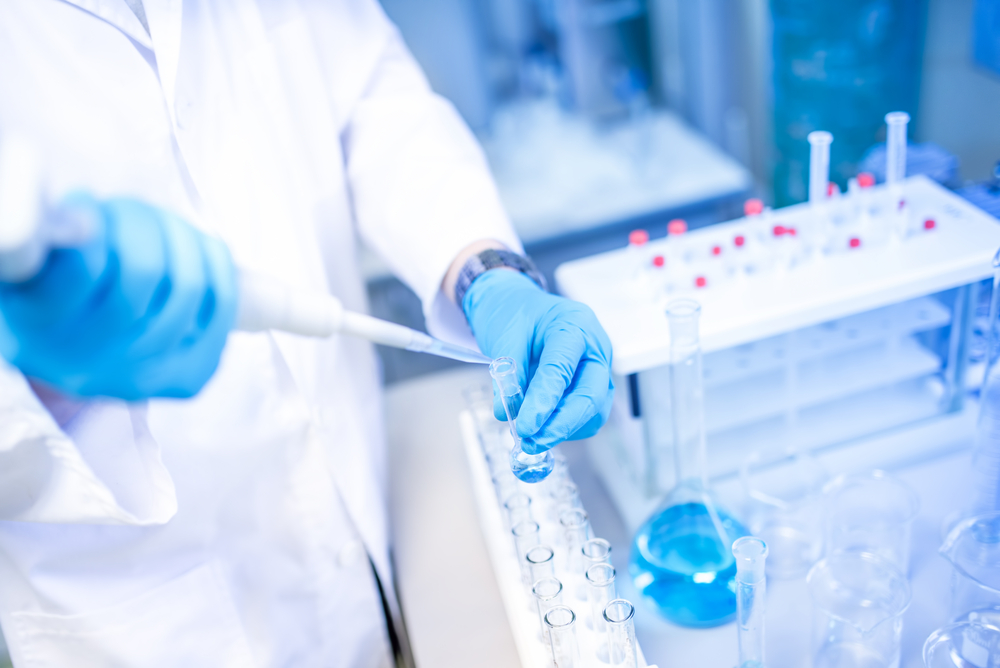New Delivery System for Regenerative Medicine to Help Muscular Dystrophy Patients

Regenerative medicine is a branch of research that deals with the process of replacing, engineering or regenerating human cells, tissues, or organs to restore or establish normal function. But a major challenge in this field has been delivering treatments to control cellular behavior.
One possible strategy to overcome this problem is to regulate damaged genes inside the cells through the delivery of specific molecules.
With the emergence of gene editing and reprogramming, many researchers are developing methods to use these technologies inside cells and correct the genome of patients with genetic conditions such as muscular dystrophy.
In a recent study titled “Highly efficient delivery of functional cargoes by the synergistic effect of GAG binding motifs and cell-penetrating peptides“ published in the journal Proceedings of the National Academy of Sciences (PNAS), a group of scientists headed by The University of Nottingham in England have created an effective system using small proteins that are able to effectively target cellular sugar coating (called heparan sulphate). The molecules are delivered in large doses inside the cells so they can have a therapeutic effect.
The team found that their system could deliver any amount of therapeutic molecules into cells that are damaged and lead to a potential new class of drugs to treat a variety of conditions. The exterior of the cellular membrane has a solid layer of heparan sulphate sugars where the specific proteins sit. The majority of the methods currently used try to target these proteins, not the sugars. Now researchers have developed a new concept for drug delivery by targeting heparan sulphates.
Lead author Dr. James Dixon, from the university’s School of Pharmacy, said in a recent press release, “In this study we show that we can directly and efficiently deliver a variety of therapeutic molecules attached to proteins that can control the gene expression of stem cells and program their fate.”
This new, highly controlled and efficient “delivery” system has the potential to target specific cells and reduce side effects. Because it is a simple protein that targets the cell surface sugars, it may be easily modified to target specific organs and cell types and therefore specific diseases.
“We’ve taken natural molecules that have evolved to interact with cells in this way and exploited their activity to design our technology,” Dixon said. “There are more versions of this sugar molecule [heparan sulphate] than the complexity of the human genome. Some types are only present on diseased cells, some on healthy tissue, some specifically in the heart, some in the brain. … If we can target these specific types we have the potential to create a very powerful therapy that could deliver therapeutic molecules and drugs directly to where we want them in the body, and very efficiently.”
The experts at the University of Nottingham are part of the UK’s Regenerative Medicine Platform, which is supported by the Medical Research Council, the Biotechnology and Biological Sciences Research Council, and the Engineering and Physical Sciences Research Council, to build on the UK’s expertise in the field of regenerative medicine and develop novel methods in regenerative medicine.
“Controlling stem cells in this way may be important, not just for regenerative medicine, but also for drug safety, the reduction of animal testing, and personalized medicine approaches,” Dixon said. “We hope technologies like this and those developed with our collaborators in the Regenerative Medicine Platform will allow us to build functional tissues from stem cells as replacements for diseased organs. Hopefully this work will also allow us to make drugs safer and smarter by specifically designing them for individual patients and removing the use of animals by testing them on patient tissue engineered in the lab.”
The protein-based system has been registered to a University of Nottingham spin-out company, Locate Therapeutics Ltd., to translate research into the clinical practice.
“We still need much further work to test its safety, stability and activity inside the body and ensure we can get the drugs to the right place. We’ve shown this can be done in-vitro [in the lab], but it needs to be achieved before this technique can be trialed in patients. We are, however, very hopeful that this powerful technology can be used to help people as soon as possible,” Dixon said.






